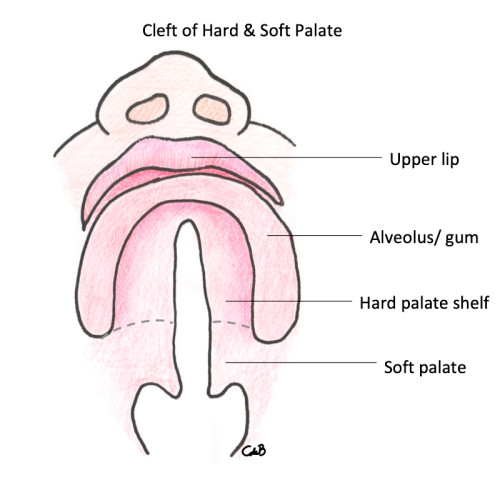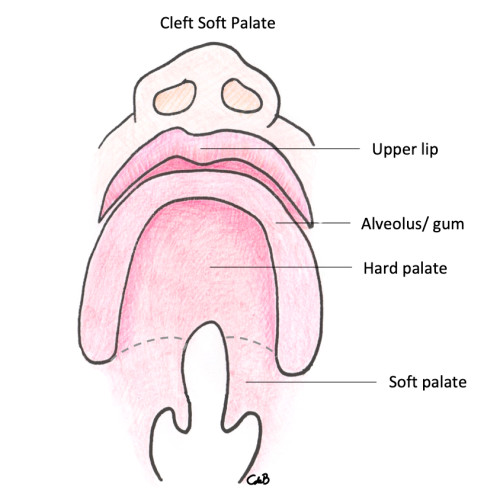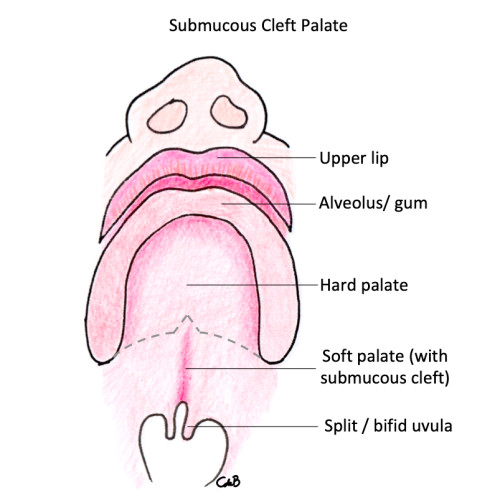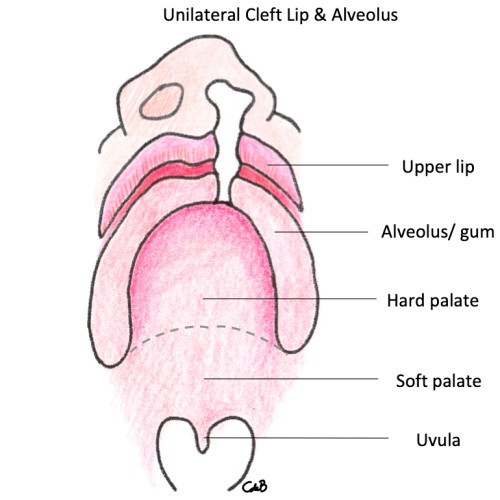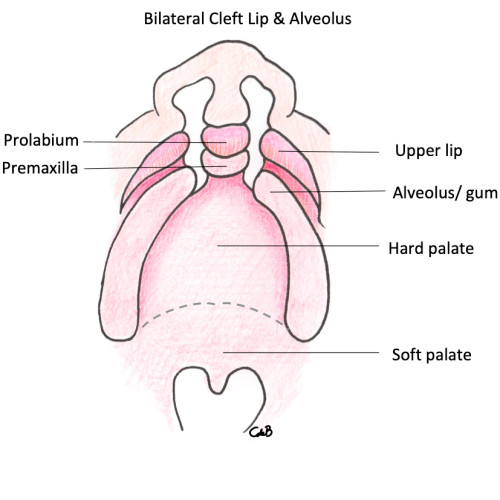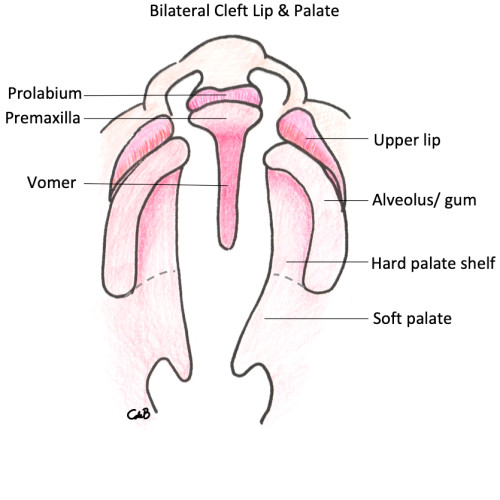Cleft Lip & Palate Explained
Different types of clefts explained
The type of cleft that occurs depends on the point at which the fusion during facial formation is interrupted. Clefts affecting the hard and soft palate only will not be visible "from the outside", whereas clefts affecting the lip, on one or both sides, can be seen externally.
Cleft Palate only
(Hard & Soft Palate cleft, Soft Palate cleft, Submucous Cleft)
The palate has 2 main parts: a hard palate, which forms the roof of the mouth, and a soft palate, which contains several muscles and is mobile. The palate forms from two palatal shelves that grow from left and right towards the midline, starting just behind the teeth. Once the shelves make contact, they fuse, and this process moves from the hard palate at the front to the soft palate at the back, ending in the uvula, a small bit of tissue that forms the end of the soft palate.
Depending on where the fusion stops, the cleft may affect the whole of the hard and soft palate, the soft palate only, or only the muscles within the soft palate – a so-called submucous cleft palate.
Cleft Lip and Palate (Unilateral, Bilateral)
The upper lip and upper gum are formed from fusion of the frontonasal prominence with the left and the right maxillary prominences. The fusion starts just behind the gum and occurs in a forward direction, closing the gum first, then the lips. Depending on when the fusion stops, the cleft may affect the lip only; the lip and gum; or in more extensive cases run from the lip all the way through the gum and the hard and soft palate. This is called “cleft lip and palate”.
If this occurs on only one side, it is called a Unilateral Cleft Lip (+/-palate). It is twice as common on the left than on the right.
It may, however, also occur on both the left and the right side, which then leads to a bilateral cleft lip and palate.
The tissues of the face are all present, although often smaller than usual, but the main issue is that they have not fused with each other.
